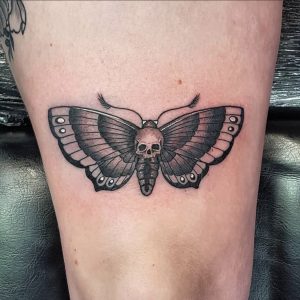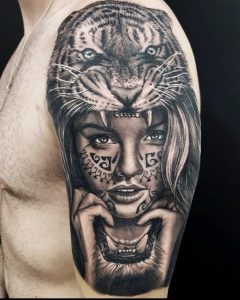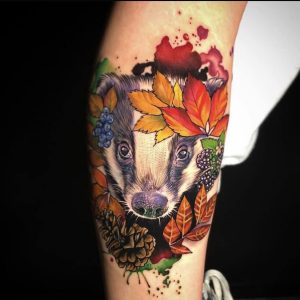Back to Basics
As the world begins to put itself back together, reconnecting and slowly shifting into gear, it feels like somewhat of a restart. So what better time than to take it back to basics. Let’s take a look at the fundamental techniques and practices that go into making a tattoo.
If you are an aspiring tattoo artist, these will be the first techniques you learn in order to build the foundation for future greatness. Then as your apprenticeship progresses, and you begin to master them, you will build on that knowledge to create truly unique and expressive pieces.
Lining

Outlining, or just lining, is the technique used to create a basic shape on the skin. It can be done with a multitude of different needles resulting in varying thickness of the lines. An artist may also choose to use a thinner needle but build on the thickness of the line with several strokes.
While it may seem like a very basic thing, compared to other more flashy techniques, proficiency in lining is also imperative to the quality of a finished piece. Wobbly lines or lines that do not flow smoothly on the body part in question does not make for a very pretty end result.
When the artist is doing the lines, there will be excess pigment on the skin, and so they have to continually wipe it down to see what has actually gone under the skin and what has not. This also makes for a lot of logistic considerations to be taken into account, such as from where to start tattooing (top, bottom, left, right, switch between the two), and in which direction to wipe, in order not to mess up patterns or for the artist to get all covered in ink themselves. And here you thought wiping was just the most painful part of the process.

Shading
Shading is the next part of the tattooing process after lining. Good shading is a technique that requires experience and diligent practice. If done well, it can provide a nearly three-dimensional look, giving pieces that illusion of depth that makes you want to look at them for days.
Shading is usually done with black ink, and the gradient of the shadows is created either by using lighter or heavier pressure on the needle or by mixing in white ink with the black to create a custom grey. The black ink could also be diluted with water to create a similar effect.
Of course, the artist’s technique with the needle is of utmost importance, but so is their artistic understanding, such as how light falls on a face and how to translate that into a portrait tattoo. Shading can also be successfully used to cover up mistakes on older pieces.
Colouring

Colouring means, not surprisingly, to fill in parts of the design with colour. Logistics here stipulate that one colour is completed first in various areas, usually from darker to lighter, rather than working, for instance, top to bottom. This prevents darker colours bleeding into lighter ones, and the artist does not need to clean the needle every five seconds when switching colours.
Generally, the best technique is considered to get as much pigment into the skin as possible with as little damage as possible. Skin that has sustained too much damage could end up rejecting some of the pigment during the healing process, resulting in a duller and less vibrant piece once healed.
